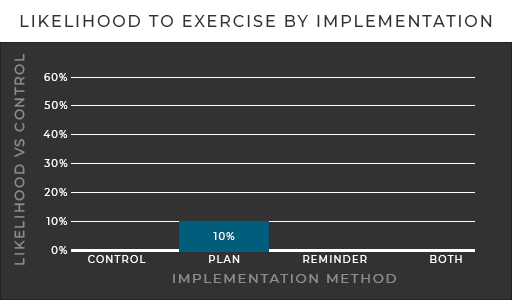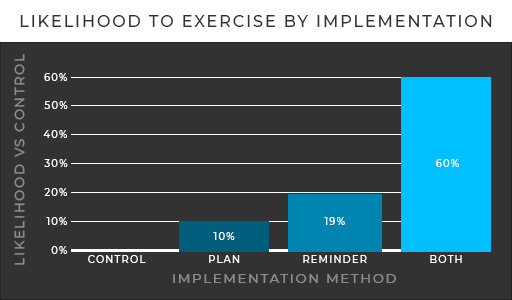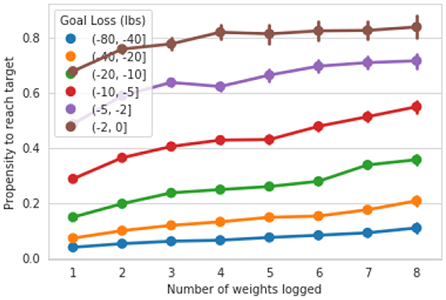The other weekend I was helping my brother clean and declutter our parents’ house. Apparently, he’s like the male Marie Kondo of our family. And while we decluttered the Zerbe household, we stumbled upon a pile of notebooks that seemed pretty old and started to page through them. We quickly figured out it was my dad’s old notebooks from when he was a teenager in high school. We saw his fishing log, random to-do lists, and even a highly detailed mechanical drawing of a boat engine. No idea what he was thinking back then. Maybe he used that drawing to impress my once single mom into going on a boat outing. 🤷♂️ If so, I guess it worked. But shortly after that we saw his workout programs outlined with exercises, sets, and reps. This was pretty neat! And then we saw his progression documented not only by his weights increasing as he got stronger, but also by his measurement log.
He took measurements of literally everything along the way! His chest, waist, thigh, calf, everything was measured and documented. He even had multiple measurements for his biceps! Flexed and non-flexed. 😅 My brother and I thought this was hilarious until we realized our biceps were much smaller than his when we were teenagers… And as funny and interesting as we thought this was, it got me thinking. I used to create Excel spreadsheets of my workouts when I was younger too. I had to-do lists for my resistance work, cardio work, and sport specific work too. And I wonder how much this documenting and tracking process helped us to develop our fitness habits. How did visualizing our progress in strength and endurance help build our exercise habit? How did this habit tracking technique lead to entire lifestyle changes where working out is now our default every day?
Well, I did some research and identified the three most important steps to building a habit today. And unsurprisingly, this habit tracking technique, the double bicep measurement, was one of them! Let me explain.
Habit Formation
Habit formation is extremely difficult. A lot of times, people will attempt to start a new habit while they’re highly motivated. They use that motivation to start a habit like working out, but it slowly fades after a couple of days. They then rely on willpower alone to power through their workout sessions for a few more days or even weeks. But that too fades and it’s why around 80% of people will dropout from their workout program within 6 months. And if you think that’s a lot, 93% of people fail to quit smoking and 95% of people fail to maintain a diet for up to a year. Luckily, if all else fails, I’ve found that starting a marriage built on mechanical boat drawings has a 0% failure rate. So, maybe start with that!

Either way, behavioral changes are difficult to maintain. A lot of times we get lost early in the process not knowing what exactly to do. Or we may forget about our new behavior since it’s new and not habitual. And lastly, the process isn’t always rewarding in the short term. I mean there are some short-term benefits to exercising, smoking cessation, and eating healthy but there’s much more friction in the short-term. It takes physical effort, mental discipline, and time to instill these new habits. And the benefits may be weeks, months, years, or even decades down the road. That can make it difficult to stay motivated and on-track. Despite this, there’s obviously people who still succeed. People who maintain their habits and make lifestyle changes. So, here are the three steps I’ve found to be most important in starting and maintaining a new habit today.
1. Create an Implementation Plan
That sounds fancy! Actually, it’s quite straightforward. Simply create a micro plan that defines what, when, and where you plan to implement your new habit. And this can all be done in one sentence! For example, “I plan to perform the myHealthSciences Bodyweight workout program every Monday-Friday at 4pm in my living room.” This implementation plan I created took me all of 60 seconds. And this 60 second investment can increase your chance of working out by up to 90%. That’s a massive difference for a little bit of work. In one study mentioned below, on the much lower end, it increased someone’s chance or working out for a month by 10% which is still significant for only 60 seconds of effort.

Why does this work? Because you’ve now created time and space for your habit to succeed. And I just used this strategy to start a new habit of mine. I’m focusing on correcting some postural issues. So, I decided I would perform 10 minutes of corrective stretches every weekday in my living room just before I go to bed. And so far, so good! I’m now 5 days in and still stretching.
2. Set a Reminder
Even with an implementation plan, where you’ve already determined when you’re going to perform your habit, you can still forget to perform it. It may just slip your mind since it isn’t habitual at this point. So, what’s an easy way to fix that? Setup a reminder on the day and time you’re supposed to perform the action. For example, I’ve setup a reminder on my phone at 10pm every weekday for my corrective stretches. This is another strategy that takes 60 seconds to setup and makes a world of difference. In the same study I referenced above, those who setup these reminders were 19% more likely to perform their exercise than those who didn’t. That’s a fairly significant increase for again, 60 seconds of initial work. But what about those that created an implementation plan and then setup a reminder?

Those who created a plan and setup a reminder were 60% more likely to continue their workouts throughout the 30 days of the study. So even though a plan alone has a 10% effect, and the reminder a 19% effect, if you combine these two strategies then they have a synergistic benefit around 60%. So, two minutes of initial work upfront provides you with a 60% greater chance of achieving your habit. Sounds like easy potatoes to me.
3. Track It
And lastly, where it all started, habit tracking. There are two methods of habit tracking that are both worthwhile and can be used in isolation or conjunction. First, tracking your habit execution. This has a few benefits but here are two: 1) It gives you an honest look at how many times you’ve actually completed the habit. For example, you now know how many times you’ve worked out within a 30-day window. No more guessing or estimating. 2) It provides you with that short-term satisfaction that healthy habits usually lack. If I have an exercise tracking chart, and mark off a box each day I work out, I feel good about it. I’m happy about crossing off another day on the calendar and seeing a chain beginning to form. A chain of consecutive days I’ve exercised.
Second, tracking your progress. Progress can be hard to see with many habits. You may only lose a pound of weight within a week of exercising. But seeing that progress can be quite motivating. In a study that compared people with various weight loss goals, those who tracked their weight more often consistently outperformed those that didn’t. Those who weighed themselves everyday were twice as likely in some cases to reach their weight loss goal than those who only weighed themselves once a week! Twice as likely to reach their goal simply by stepping on a scale each day. Now, I think you can take this overboard and be weight obsessed in this example, but the point is tracking your progress allows you to visualize the change. When my dad saw both his flexed and non-flexed bicep measurements increase week after week, I’m sure that motivated him to continue working out. This is another strategy which can take just 60 seconds but has a host of benefits.

Final Thoughts
Behavior change is difficult. We’re creatures of habit and changing those habits aren’t easy. It requires purpose, discipline, but most importantly, clarity. So, if you want to maximize your chances of making a habit today then create an implementation plan. Setup a reminder on your phone to follow-through on that implementation plan. And track both your flexed and non-flexed bicep to visualize the progress. These are three of the most important strategies I’ve found to implement and maintain healthier and happier habits.
Are you looking for an exercise program that implements these habit strategies?
Watch a YouTube Video Summarizing the Post

Hey, I am Brandon Zerbe
Welcome to myHealthSciences! My goal has always been to increase quality-of-life with healthy habits that are sustainable, efficient, and effective. I do this by covering topics like Fitness, Nutrition, Sleep, Cognition, Finance and Minimalism. You can read more about me here.
Sources:
- Quitting Smoking: Closer with Every Attempt
- Dieting Statistics: What the Research Says About Diets
- Dropouts and Compliance in Exercise Interventions Targeting Bone Mineral Density in Adults
- Can The Effects Of Implementation Intentions On Exercise Be Enhanced Using Text Messages?
- Goal-setting And Achievement In Activity Tracking Apps: A Case Study Of MyFitnessPal
- 1% Better Every Day – James Clear at ConvertKit Craft + Commerce 2017
